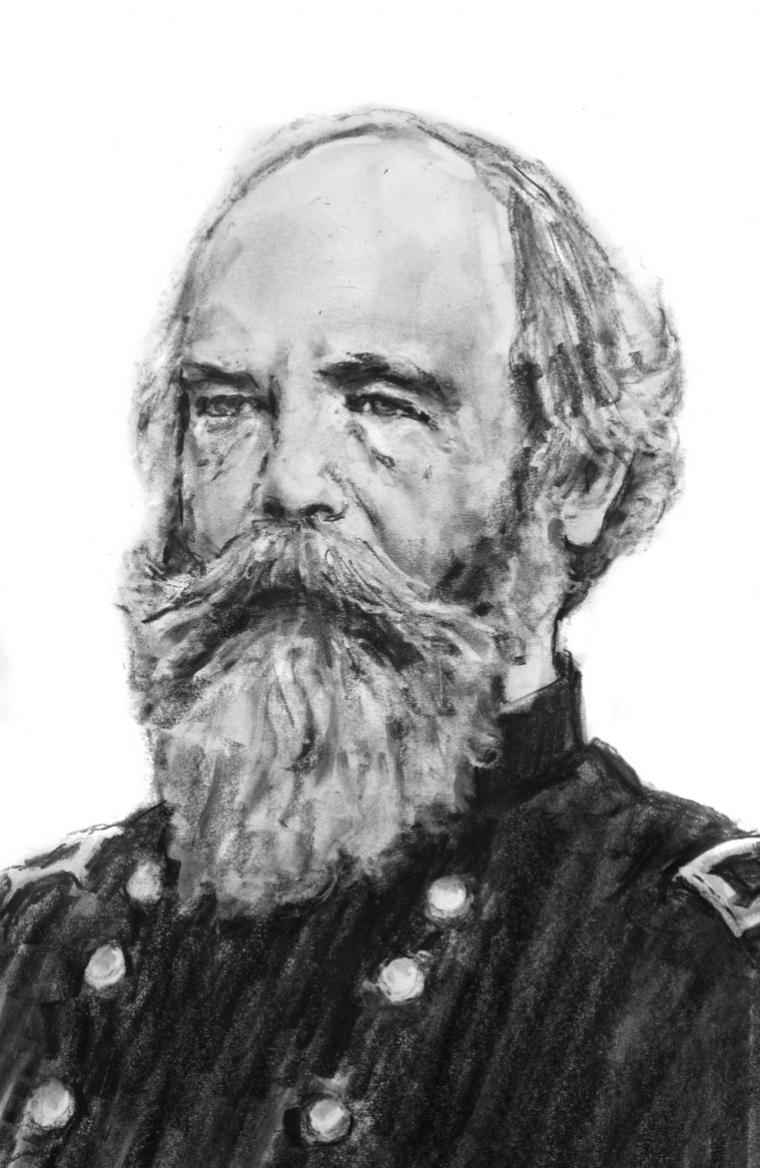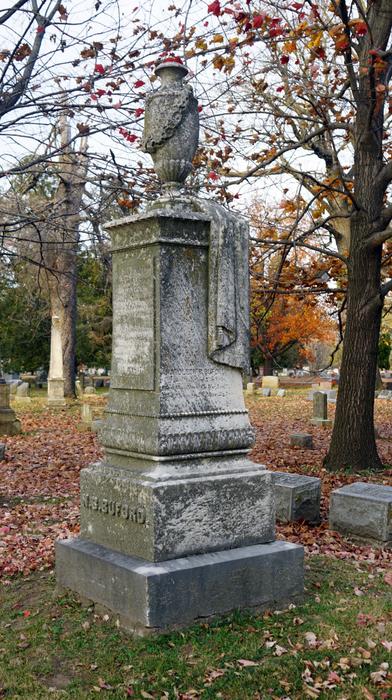
Napoleon Bonaparte Buford (drawing by Bruce Walters).
Following his graduation from West Point, Lieutenant Napoleon Buford surveyed the Rock Island and Des Moines rapids on the Mississippi River in the late 1820s. The rapids were a major obstacle for steamboats navigating the river above St. Louis. According to a U.S. Corps of Engineers report, “His maps, though general, were quite accurate, considering that he made his surveys in February, with a foot of ice and nine inches of snow covering the river.”
Buford moved to Rock Island in the early 1840s shortly after Rock Island was incorporated as a town. He would be a prominent manufacturer, President of the Federal Union Bank of Rock Island and President of the Rock Island and Peoria Railroad.
With the declaration of war in 1861, the state of Illinois answered President Lincoln’s call for volunteers. Buford was placed in command of the 27th Illinois Volunteer Infantry although he had retired from the military 26 years before. He was now 54 years old.
The regiment saw their first action only months after it had been organized, when his men formed the right wing of the attacking force at the Battle of Belmont, Missouri. According to the Report of the Illinois Adjutant General 1861-1866: “Under the inspiration of its brave Colonel [Buford] it drove, in the midst of a perfect hail of bullets and canister shot, the enemy from his camp in utter rout, capturing two brass field pieces which it immediately manned and turned upon the retreating enemy.”
In the spring of 1862, Buford commanded the Flotilla Brigade of the Army of the Mississippi during the Battle of Island Number Ten. His regiment was the first to land on the island, where they took charge of more than 200 prisoners and thirty siege guns. This was the first battle in which the Confederate army lost a position on the river. Buford was promoted from Colonel to Brigadier General of U.S. Volunteers in 1862 and led a brigade during the Siege and Battle of Corinth, Mississippi.

After serving in the very early stages of the Vicksburg Campaign, he would serve as commander of Cairo, Illinois. Then commander of the District of East Arkansas, an area of the Confederate state controlled by the North.
As stated in his biography on Prabook, “There he did his most notable work. He coped successfully with smugglers, guerrilla parties, and lessees of plantations, organized a freedmen's department of 5,000 men, established an orphan asylum and an industrial school for liberated slaves, and prosecuted dishonesty among his own subordinates.”
In 1865, he was brevetted major general of volunteers “For gallant and meritorious service during the Rebellion.”
After the war, Buford served as superintendent of the Federal Union Mining Company in Colorado, special United States commissioner of Indian affairs, and special United States commissioner to inspect the completed Union Pacific Railroad.
The later years of his life were spent in Chicago where he died in 1883. He was buried in Chippiannock Cemetery in the Buford family plot (block 32, lot 1).
Napoleon’s younger half-brother, John, preceded him in death by 20 years. He was to be buried in Chippiannock. Instead, he was buried at West Point in recognition of his heroism at the Battle of Gettysburg, where he held the high ground while in command of a division. Just before his death at age 37, John Buford received a personal message from Lincoln, promoting him to major general of volunteers: the same rank that would be bestowed on Napoleon.
Bruce Walters is a Professor Emeritus in Art conferred by Western Illinois University.
This is part of an occasional series on famous (or infamous) people buried in cemeteries in the Quad Cities, and their history that is not so well-known today. If there’s a piece of history buried here that you’d like to learn more about, e-mail the location and a brief description to BD-Walters@wiu.edu.








